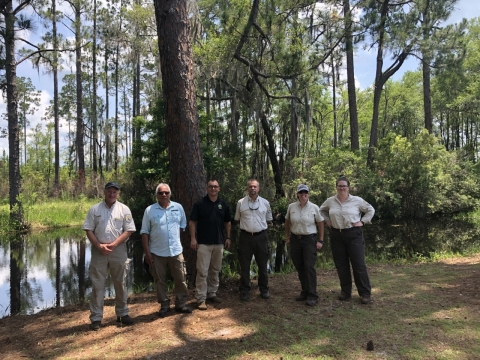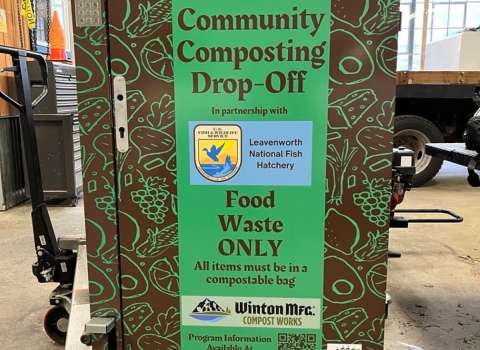The Okefenokee Swamp, according to the Muscogee Nation, is “the most blissful spot of the earth.” In the Muskogean dialect, Okefenokee means “shaking water in a low place.” It was part of their beloved homeland until they were forcibly removed in the early 19th century. They had never officially returned to the Okefenokee.
Until last month.
Turner Hunt, the Nation’s historic preservation officer, and Emman Spain, responsible for the return and care of the Nation’s ancestors and preservation of artifacts, visited the Okefenokee National Wildlife Refuge on June 10. They traveled from Oklahoma to southeast Georgia and met with refuge and Service staff, including Larry Woodward, Susan Heisey, Haley Messer, and Rick Kanaski. They then took a boat ride through the swamp. Molly Samuel, a reporter for NPR’s WABE radio station in Atlanta, accompanied the crew.
First stop: Floyd’s Island, one of the three known camps used by the Seminoles during the early 19th century Seminole Wars. (Billy’s and Mitchell islands are the other camps.) Along the way, Hunt and Spain pointed out various plants, including arrowroot, used for food and other tribal needs. They visited the Hebard Cabin, listed on the National Register of Historic Places. Floyd’s Island is also home to six archaeological sites, including a low burial mound that was cut in half by a rail line used by the Hebard Cypress Company.
The trip wasn’t all sightseeing. The Okefenokee is much in the news these days. The tribe is concerned about the impacts a proposed open pit titanium mine near the refuge could have on cultural and historical properties. (The U.S. Army Corps of Engineers recently ruled that the Muscogee Nation must be further consulted on the likelihood of nearby burial grounds, in effect suspending the project. The mining company, Twin Pines LLC, is challenging that decision in court.)
The tribe considers the swamp a “Traditional Cultural Property” and sought the Service’s opinion on whether the U.S. Fish and Wildlife Service too would consider such a designation. Other tribes, including the Seminole, the Seminole Nation, and the Poarch Band of Creek Indians, would also have to officially weigh in. Hunt, Spain and Service staff also discussed the pending UNESCO World Heritage designation for the Okefenokee, a rare and coveted listing strongly supported by the Muscogee Nation.
Along the way, Woodward, the deputy refuge manager, and Susan Heisey, the supervisory refuge ranger, spoke at length about the Okefenokee’s biological diversity and conservation management techniques. Kanaski, the Service’s regional archaeologist and historic preservation officer, discussed ongoing research projects.
Finally, upon returning to the visitor center, refuge staff queried Hunt and Spain about possible exhibits and educational material to include in a new visitor center. Exhibits would highlight the tribe’s history and its long relationship with the swamp. Service staff extended open invitations to the Muscogee Nation to visit Okefenokee any time, and to not wait another 200 years.




